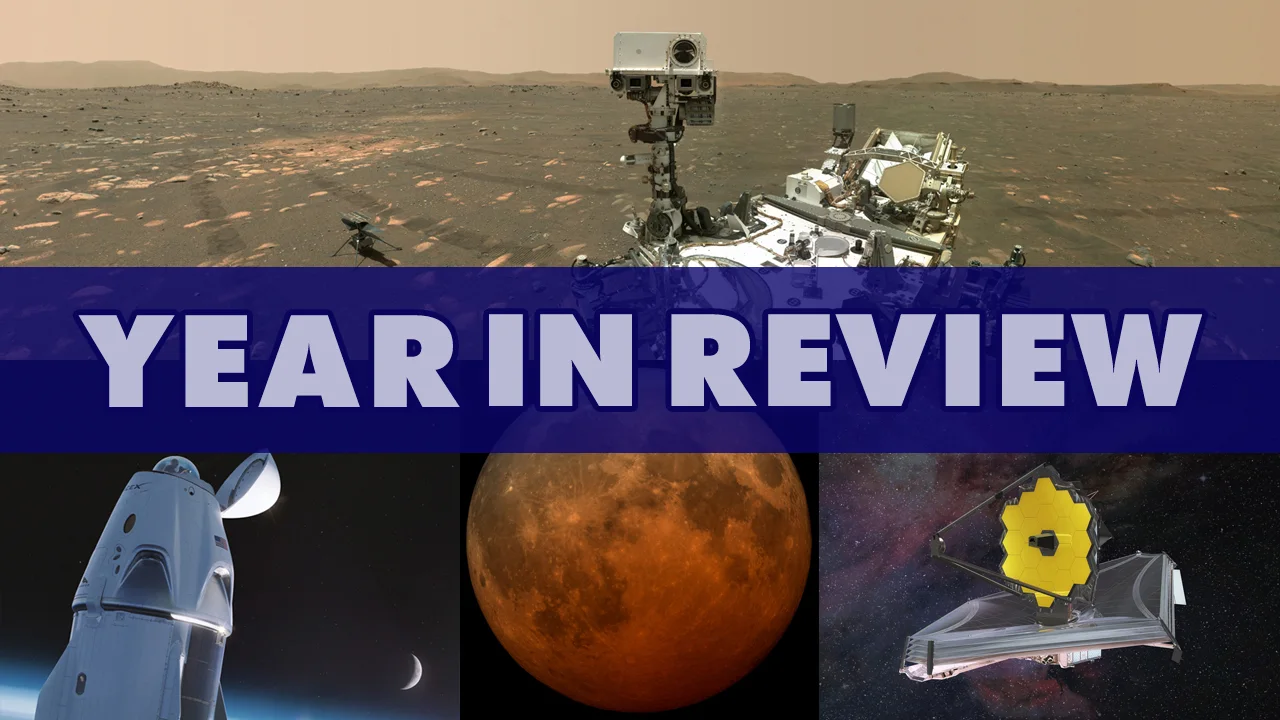
Mars landings to Mega-comets: The top six space stories from 2021
Does your list of favourites match up with ours?
Amazing Mars landings. Incredible cosmic discoveries. Spectacular sights in our skies. This year has delivered a steady stream of astronomy and space stories, and while it wasn't easy to choose among them, here's our best of the best from 2021.
IN OUR SKIES
There were many astronomical events to see in the skies throughout the year. Meteor showers, planetary alignments, and eclipses were all beautiful sights to behold. However, the best of these for all of 2021 were the two lunar eclipses that were visible across nearly all of Canada.
On the morning of May 26, the Super Flower Moon passed through Earth's shadow, producing the last "Super" Total Lunar Eclipse we'll see for the next decade. While it was best viewed from the western half of the country, excellent views were streamed over the web for those who couldn't see the entire event for themselves.
Watch below as LA's Griffith Observatory presents the Super Blood Flower Moon total lunar eclipse in less than 1 minute.
A little under six months later, on November 19, we saw another lunar eclipse.
This time the Full Moon mostly dipped into the dark, reddish portion of Earth's shadow. Thus, it 'only' produced a partial lunar eclipse.

The November 19, 2021, Partial Lunar Eclipse, as seen from Calgary, AB. Credit: Kyle Brittain
However, this eclipse was still pretty special. In fact, due to the Moon's path bringing it so close to the edge of the umbra, this was the longest partial lunar eclipse seen since February 18, 1440, over 581 years ago!
According to NASA's records, the next longest partial lunar eclipse occurs nearly 648 years from now, on February 8, 2669!
Runner up: Another event in our night skies that ranked pretty high this year was the burst of aurora activity that occurred in the first week of November.
Although the "Halloween Solar Storm" ultimately failed to deliver any significant auroras, further solar activity during the first couple of days of November sparked incredible displays that were visible much farther south than usual.
As we just entered a new solar cycle, this kind of activity will be ramping up over the next five years or so. Thus, there will be plenty more opportunities to see the Northern Lights in the years to come.
ON MARS
Many eyes have been on Mars this year. Two missions — Curiosity and InSight — were already operating on the surface to start. Meanwhile, six orbiters — Mars Odyssey, MRO, Mars Express, MAVEN, MOM, and ExoMars TGO — were circling the planet. Adding to this, the Emirates "Hope" orbiter and China's Tianwen 1 spacecraft both pulled into orbit in early February. Just days later, NASA's Perseverance rover touched down in Jezero Crater. Finally, in May, China's Zhurong rover landed in Utopia Planitia, doubling the robot population of the surface of Mars.
Of all these new missions, simply based on its accomplishments so far and the tremendous amount of data it has sent back, the best is NASA's Perseverance and Ingenuity mission.
The rover's landing on February 22 was simply unreal. Although similar to Curiosity's 2012 landing in Gale Crater, it included new technological advances that allowed Perseverance to steer itself to the perfect touchdown spot. It also treated us to spectacular views, not only of the terrain below as the rover chose where to set down but also of the incredible 'sky crane' maneuver during the final step of the landing.
As a special bonus, sharp-eyed viewers spotted a binary code message sewn right into the pattern of Perseverance's parachute. When translated, it spelled out the motto of the Jet Propulsion Laboratory — DARE MIGHTY THINGS.
Perseverance is a technological marvel, in of itself, with high-definition cameras and instruments designed to tell us whether life once existed on Mars. Along for the ride, though, was a small drone helicopter named Ingenuity that has now flown on Mars — something that was once thought to be impossible.
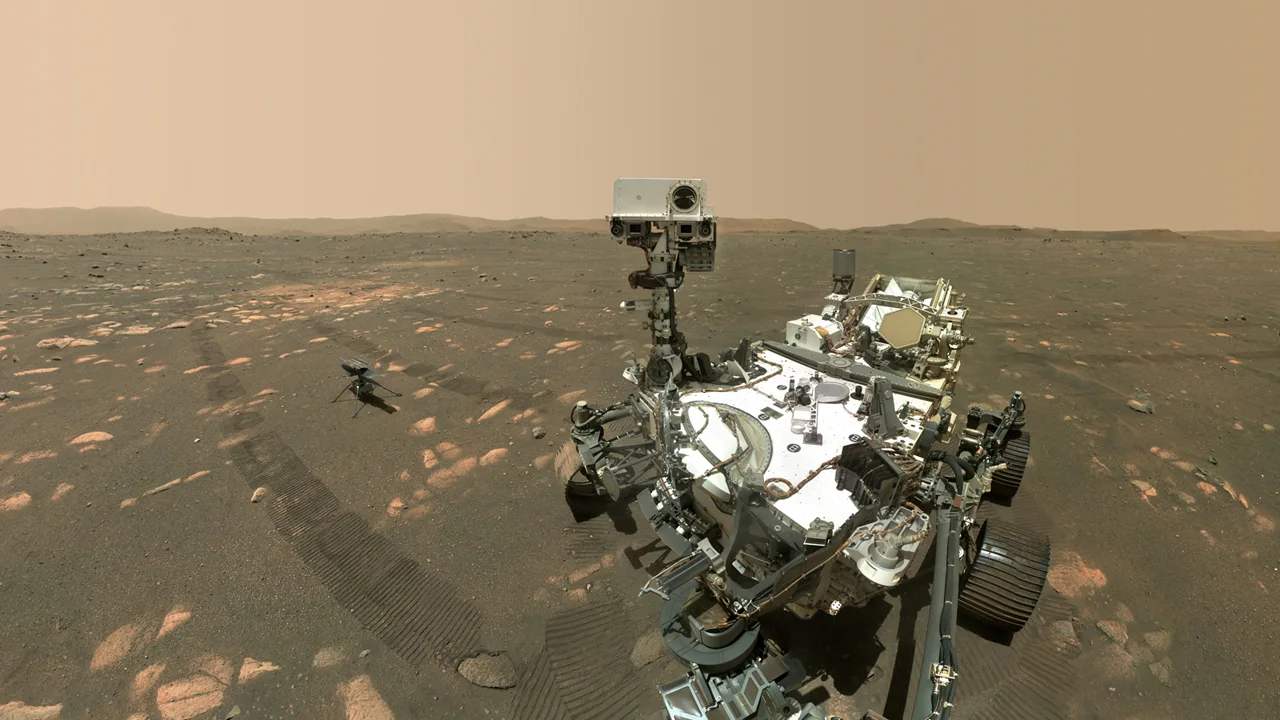
Taken on April 6, 2021, the 46th Martian day of Perseverance's mission, this 'selfie' with Ingenuity is a composite, stitched together from 62 images captured the WATSON (Wide Angle Topographic Sensor for Operations and eNgineering) camera, located at the end of the rover's robotic arm. Credit: NASA/JPL-Caltech/MSSS
Ingenuity's sole mission, to start, was simply to prove that powered rotor flight can work in Mars' extremely thin atmosphere. After succeeding in that goal, following the drone's fifth flight, NASA graduated it from a simple tech demonstration to a full-fledged member of the science mission. Now, having completed a total of 18 flights for 2021, Ingenuity is acting as a scout for Perseverance, locating interesting targets for investigation. It is even exploring parts of the crater floor that are deemed too hazardous for Perseverance to venture.
Runners up: The rest of the new Mars explorers that arrived this year deserve their share of attention as well. For the first deep-space mission from the United Arab Emirates, Hope performed remarkably well, and even captured our best look yet at Mars' auroras. The Tianwen 1 mission is not only the first Mars orbiter for China, but it also included the nation's first Mars lander. With the Zhurong rover rolling around on the surface, China becomes only the second nation to successfully land a robot rover on Mars.
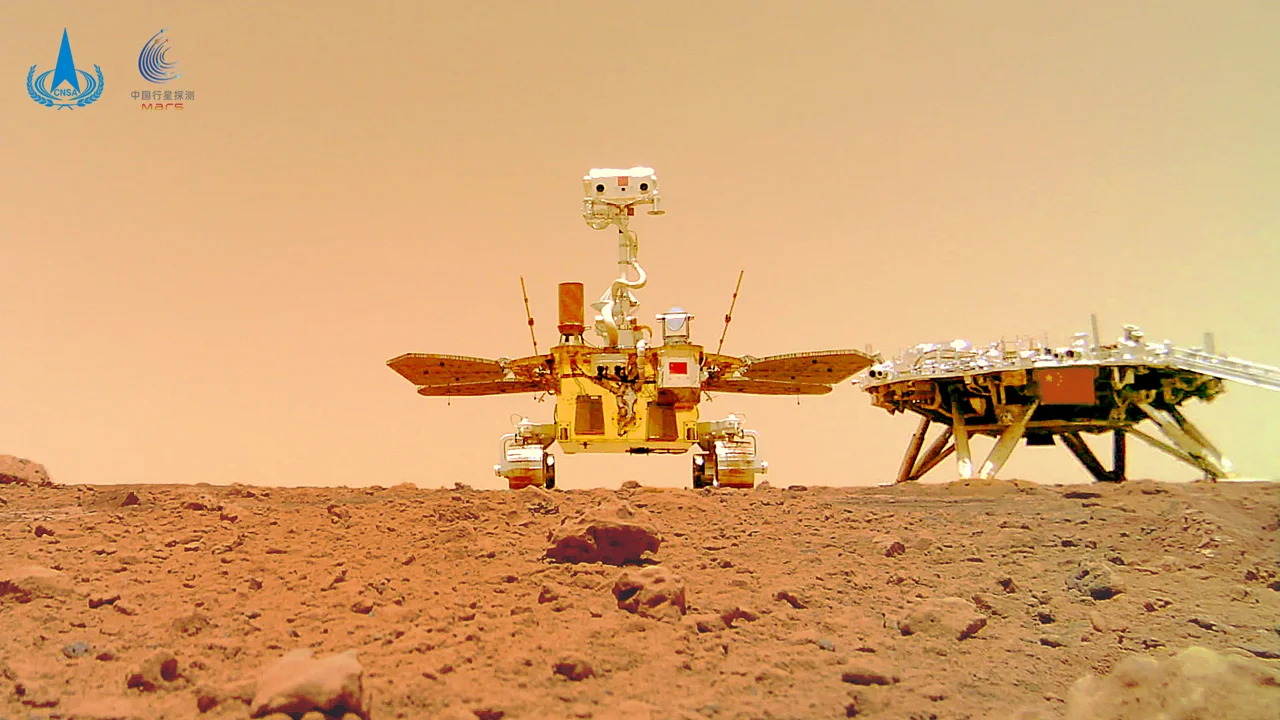
China's Zhurong rover snaps a picture with a remote camera that has been placed on the surface, capturing both the rover and its lander. Credit: CNSA
OUT IN THE SOLAR SYSTEM
There have been some ambitious space missions launched over the years. However, one that stood out this year was the Parker Solar Probe. Launched by NASA in 2018, this spacecraft has already flown closer to the Sun than any previous mission. It has also broken records for speed as it dives closer and closer to our home star.
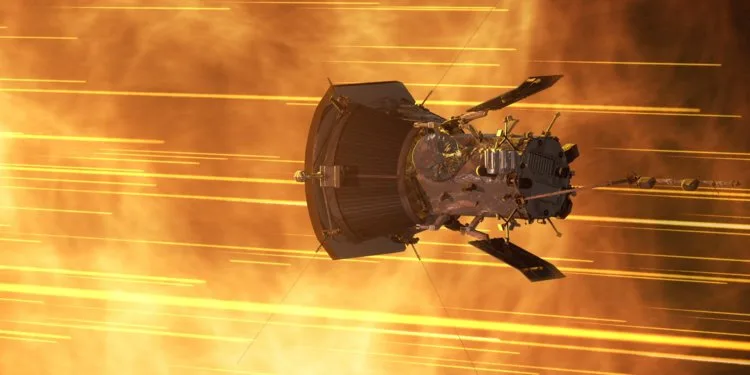
This artist's impression shows the Parker Solar Probe flying through perihelion — its closest distance to the Sun during its orbits. Credit: NASA's Goddard Space Flight Center
This year, Parker Solar Probe finally flew close enough that it effectively touched the Sun! On April 28, during PSP's eighth pass around the Sun, it dove through the outer edge of the Sun's atmosphere, the corona.
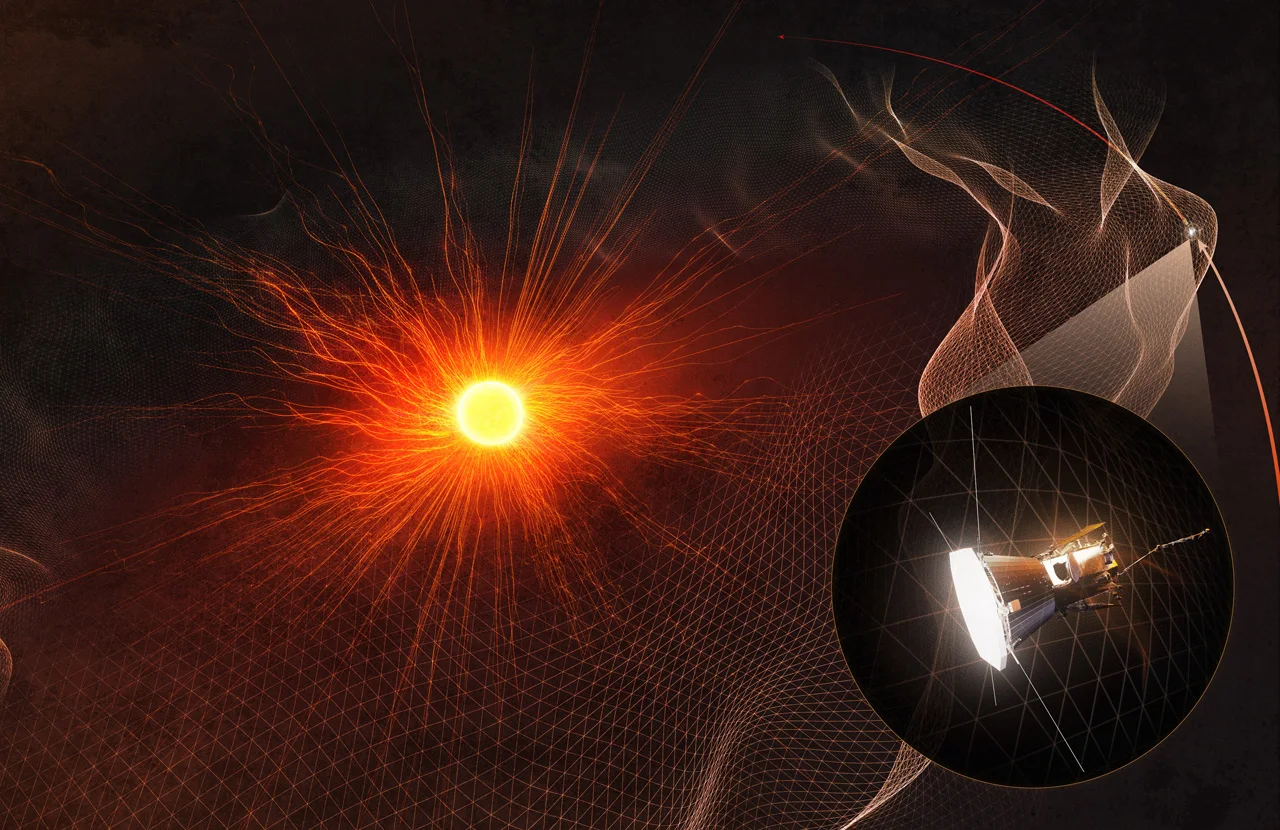
This schematic shows PSP's path through the corona on orbit 8. Credit: NASA's Goddard Space Flight Center
"I'm excited to see what Parker finds as it repeatedly passes through the corona in the years to come," Nicola Fox, the director of the Heliophysics Division at NASA HQ, which specializes in the study of the Sun and how its activity affects Earth and the solar system, said in a NASA press release. "The opportunity for new discoveries is boundless."
Runner up: As NASA's Juno mission enters its extended mission around Jupiter, the spacecraft has begun capturing images of other exciting targets in the area. In 2021, the probe gave us our closest look yet at Jupiter's largest moon, Ganymede!
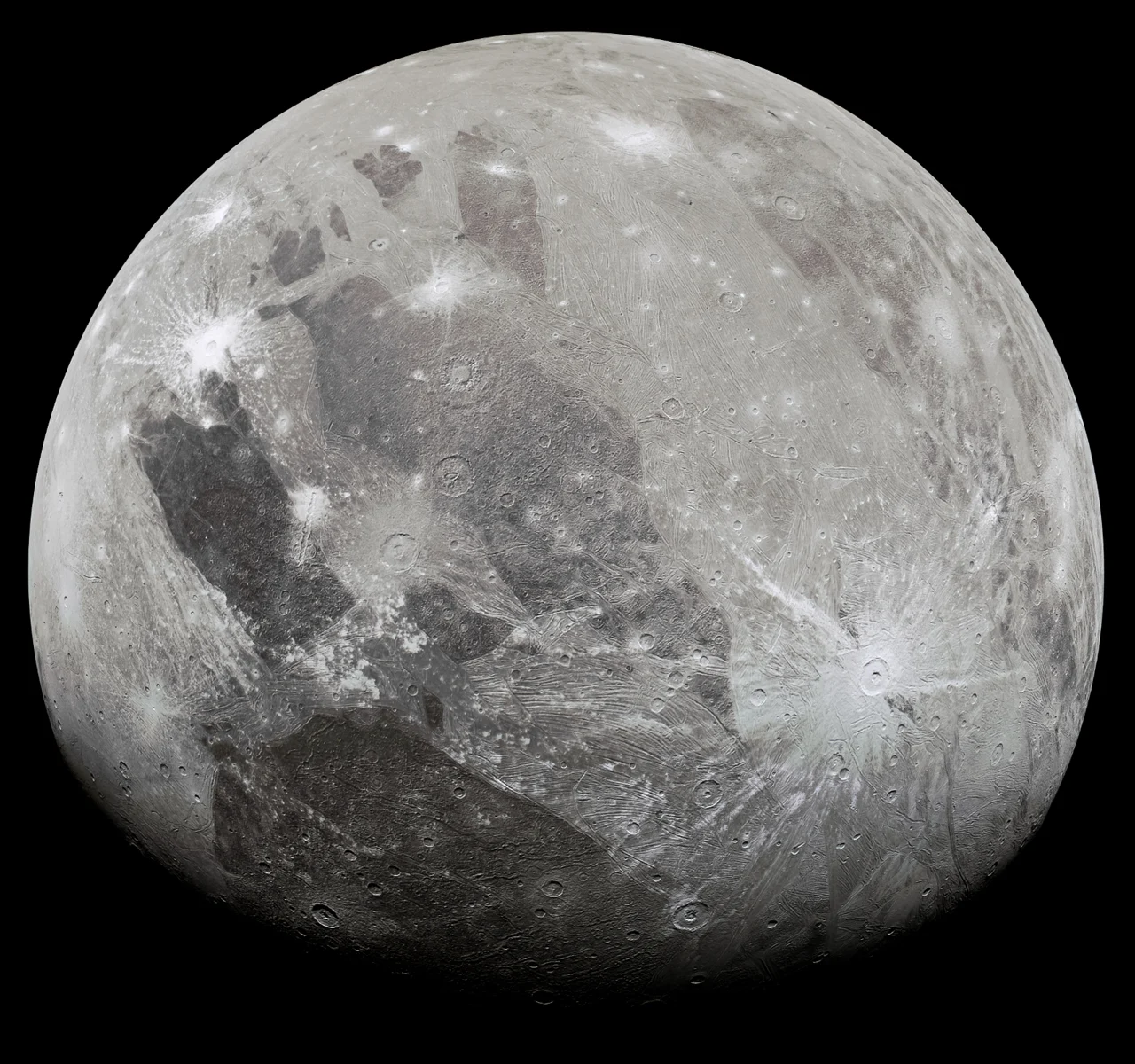
This image of Ganymede from the June 7, 2021 flyby was produced from raw Juno data by Kevin M. Gill, software engineer and data wrangler at NASA-JPL. Credit: NASA/JPL-Caltech/SwRI/MSSS/Kevin M. Gill (CC by 3.0)
HUMAN SPACEFLIGHT
A total of eight missions carried people into orbit in 2021. SpaceX's Crew 2 and Crew 3 Dragons launched to the International Space Station. Russia also sent the Soyuz MS-19, MS-19, and MS-20 spacecraft to the station. On the Shenzhou-12 and Shenzhou-13 spacecraft, China launched two crews to their new Tiangong space station.
The eighth launch is a remarkable one, though. SpaceX's Inspiration4 mission was the first all-amateur orbital launch ever. Four civilian astronauts — Jared Isaacman, Dr. Sian Proctor, Hayley Arceneaux, and Chris Sembroski — lifted off in a unique private Dragon spacecraft, supported by a completely private crew on the ground, for a three-day flight around the Earth.
Circling the planet at 575 kilometres above the ground, Inspiration4 flew higher than any other space mission in nearly two decades! The mission raised over $210 million for St. Jude Children's Hospital, but it was also meant to inspire anyone who wants to one day fly to space.
Runners up: SpaceX wasn't the only company to make headlines with civilian launches to space this year. Two celebrities blasted off to the edge of space on Blue Origin's New Shepard rocket. Wally Funk, a member of the Mercury 13, the group of women who trained as Mercury astronauts but were then denied the chance to go to space, flew with Jeff Bezos on July 20. Star Trek's William Shatner then flew on another New Shepard launch on October 13.
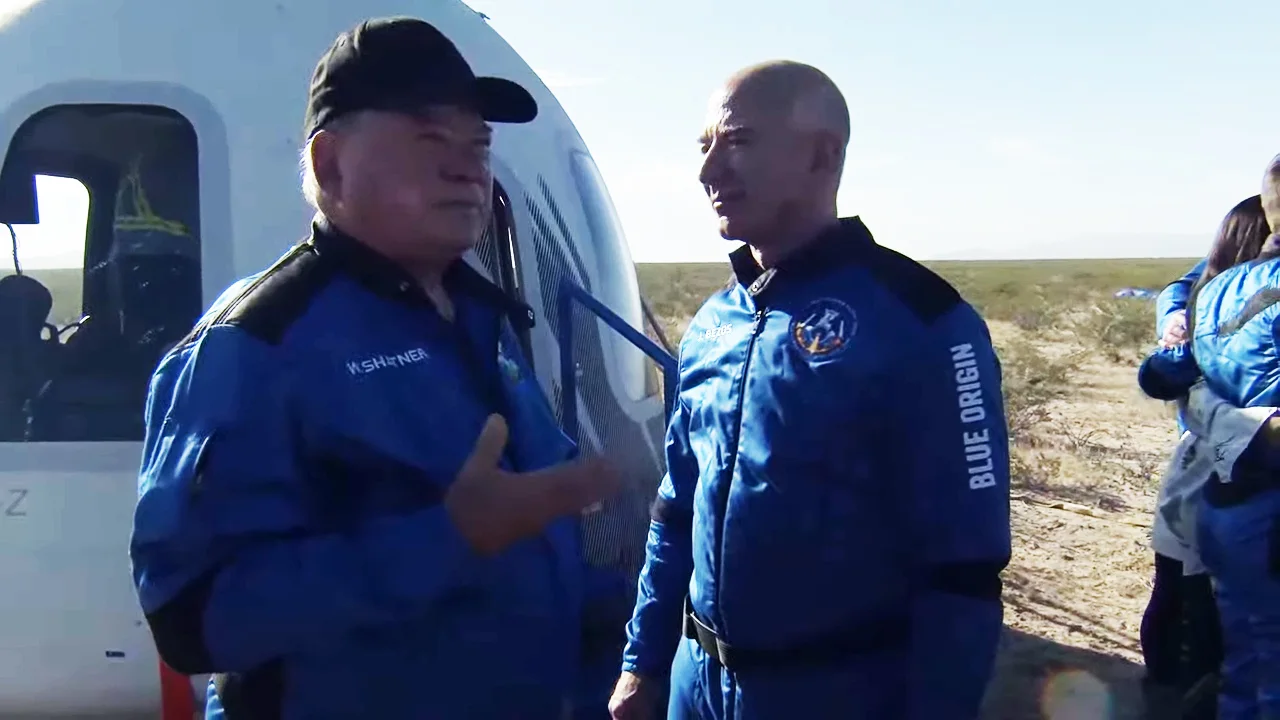
William Shatner stands with Blue Origin founder Jeff Bezos near the RSS First Step capsule as he relates his experience on the flight after touchdown on Wednesday, October 13, 2021. Credit: Blue Origin
NEW VISITORS
While the Moon and the planets are near-constants and we can count on annual meteor showers like clockwork, something new shows up in our night skies every once in a while.
Dozens of comets have been spotted this year, but none have delivered so spectacularly as Comet Leonard.
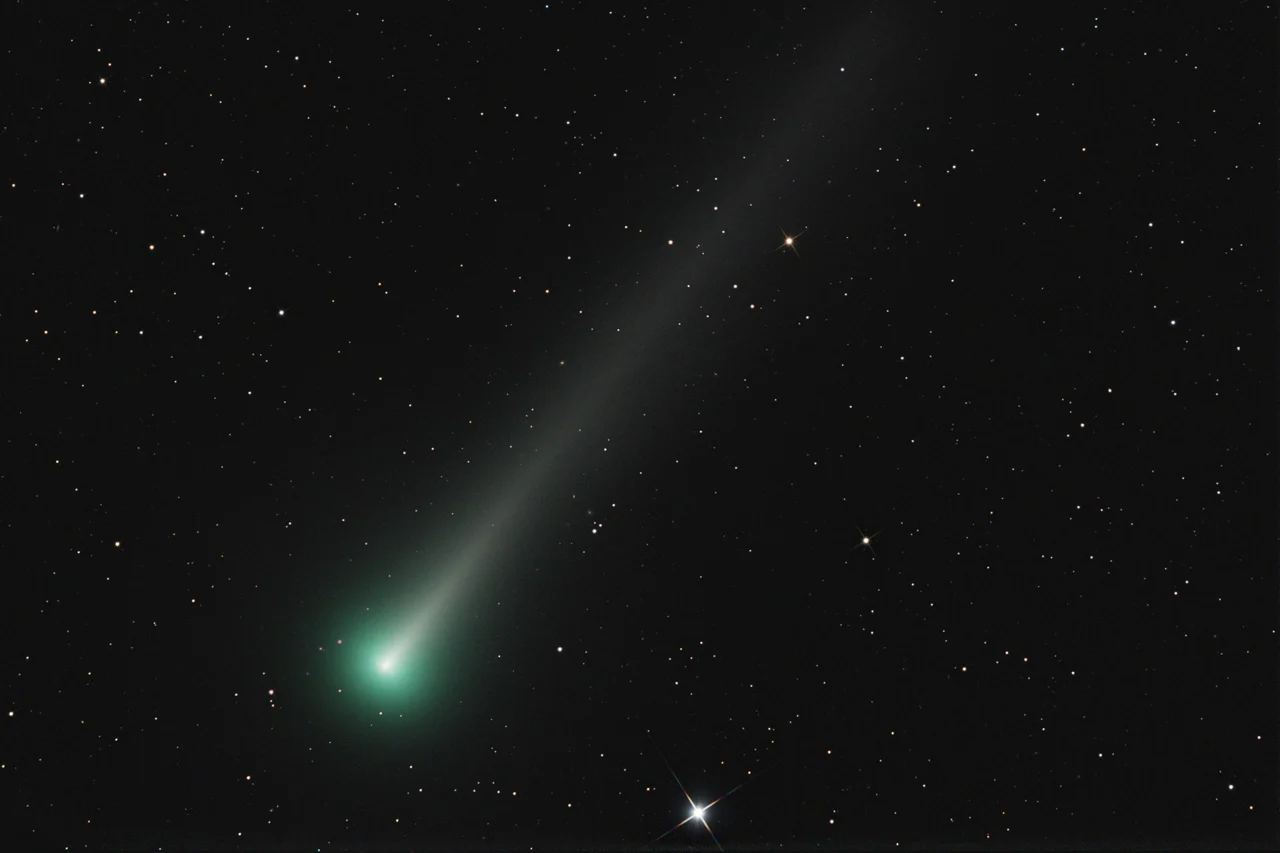
Astronomer Gregg Ruppel captured this view of Comet Leonard on December 8, 2021, from Animas, NM. (Used with permission)
Discovered on the 3rd of January by astronomer Gregory Leonard at the Mt. Lemmon Observatory, it was the first comet found in 2021. As such, it goes by the technical name C/2021 A1 (Leonard).
This is the very first time we've seen this comet, and it is very likely the last time, as well. With an estimated 80,000 year orbit, it would take some extraordinary circumstances for anyone alive today to see it make a return pass. However, it doesn't look like Comet Leonard will make another pass around the Sun, ever.
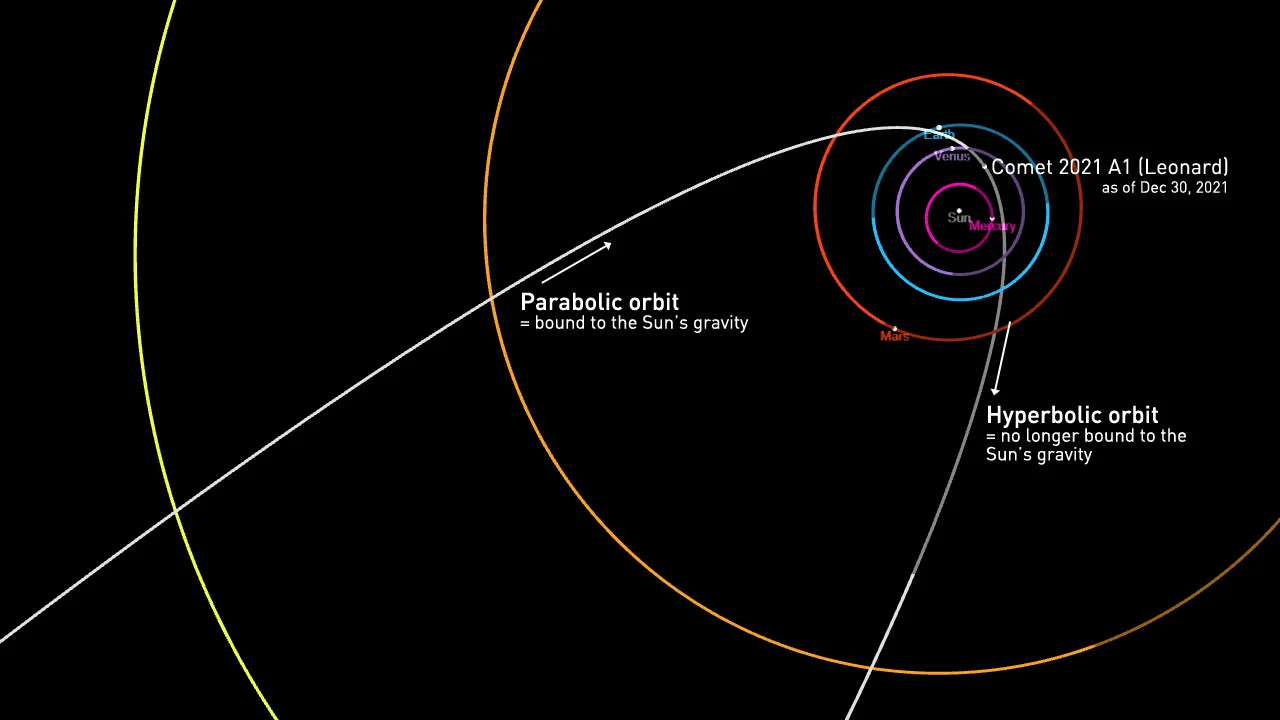
This orbital diagram for C/2021 A1 (Leonard) plots the comet's trajectory through the inner solar system as well as its location on December 30, 2021. Credit: NASA/JPL-Caltech/CNEOS
As shown in the orbital diagram above, the comet's inbound trajectory is parabolic, which means it is gravitationally bound to the Sun. A parabolic comet will orbit the Sun indefinitely. Once Comet Leonard makes its closest pass around the Sun on January 3, 2022, though, its orbit becomes hyperbolic. It will have picked up enough extra speed that it will be moving fast enough to break free from the Sun's gravity.
In other words, in Comet Leonard, we are seeing an interstellar comet before it goes interstellar!
Runner up: There was another remarkable comet discovery this year, but it doesn't make the top spot because it's so far out in the solar system right now, it only appears as a tiny bright dot to our most powerful telescopes.
Comet C/2014 UN271 (Bernardinelli-Bernstein) was first noticed by astronomers in June of this year, but they then traced it in previous observations all the way back to 2014.
The remarkable thing about Comet Bernardinelli-Bernstein? It is massive! While most comets are about 10 kilometres wide, current estimates say that 'mega-comet' Bernardinelli-Bernstein is roughly 200 kilometres across! That makes it one of the largest comets we've ever seen!
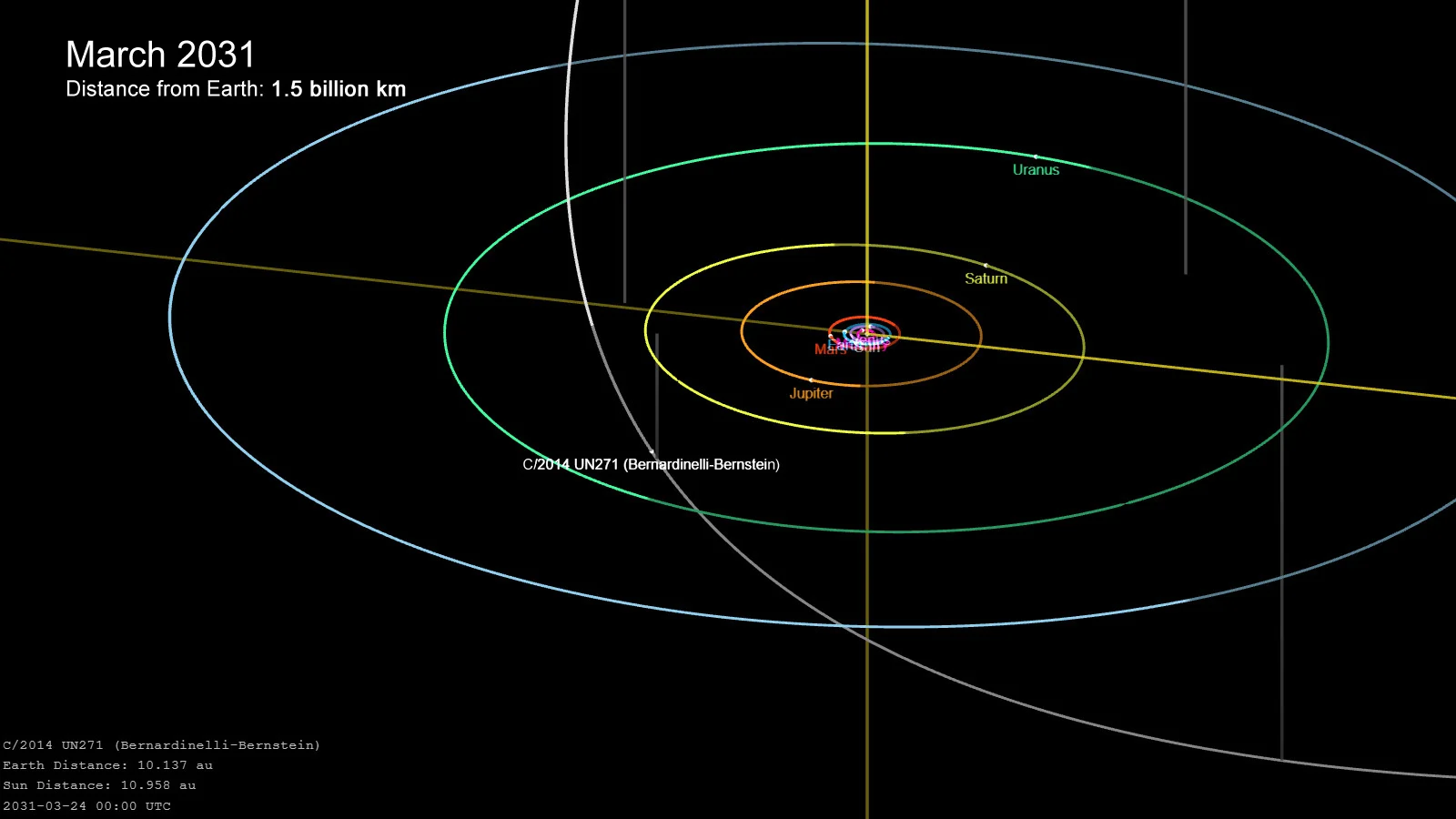
The projected position of 2014 UN271, on March 24, 2031. Credit: NASA/JPL-Caltech
This mega-comet won't reach its closest distance to the Sun until 2031. But, even then, it will be far out in the solar system, just beyond the orbit of Saturn. So, while it won't come close enough to Earth to put on a great show, telescopes will be tracking it the entire time. Maybe we could even launch a fast-moving space probe to intercept it for a closer look!
NEW MISSIONS
Several new space missions launched this year, but the one that holds the most promise is the James Webb Space Telescope.
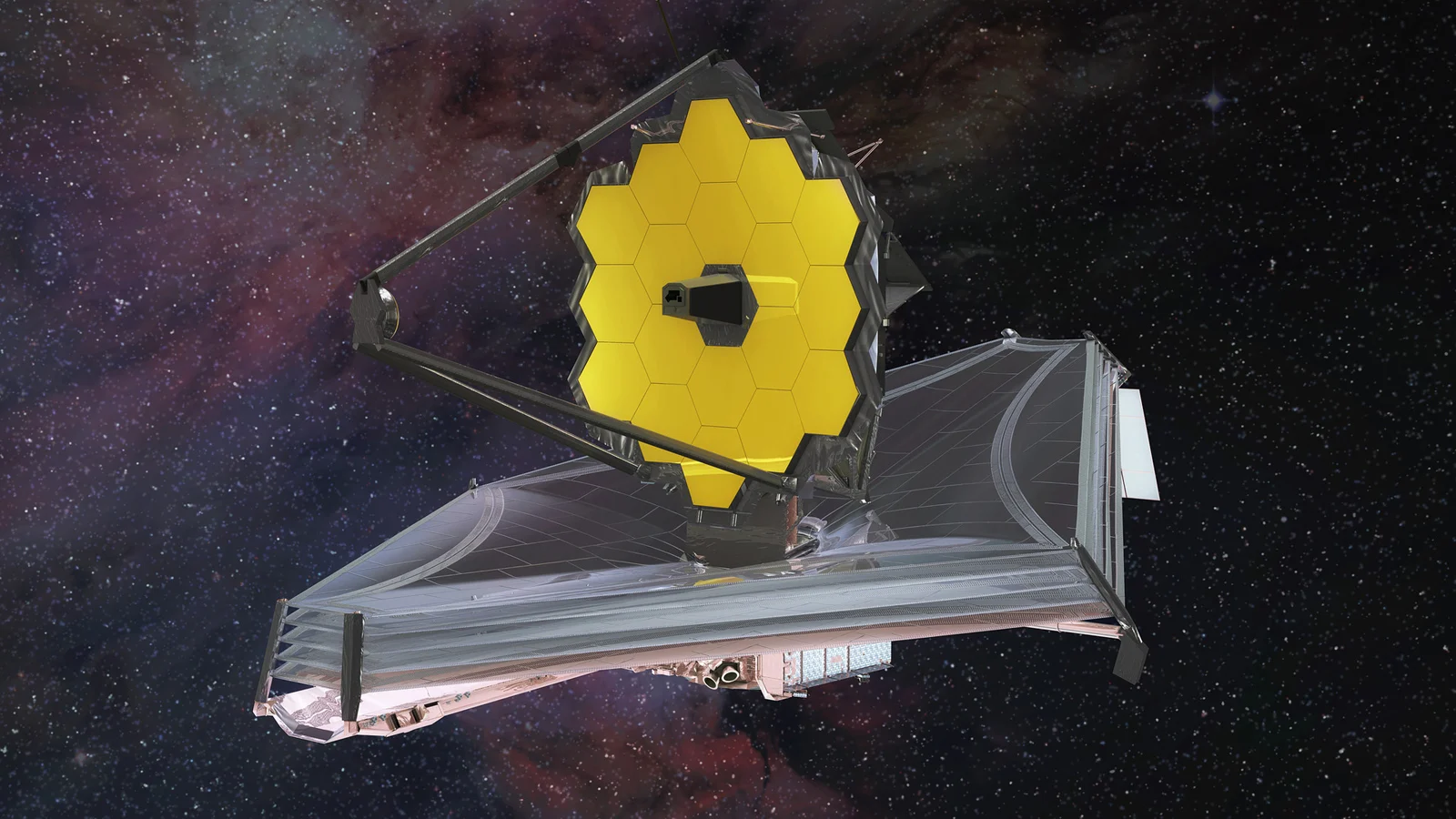
This artist impression shows the James Webb Space Telescope (JWST) against the backdrop of the cosmos. Credit: ESA/Northrup Grumman
After blasting off Christmas morning, Webb will reach its final orbit around Lagrange Point 2, 1.5 million kilometres away from Earth, in late January. Once there, the mission team will then take another 4 to 5 months to deploy the telescope and calibrate its mirrors and other systems. Once that wait is over, JWST will then get to work revolutionizing astronomy. It is expected to provide us with our clearest views of the cosmos yet, it could potentially discover life-supporting alien worlds, and it will see farther back in time than any telescope has so far, to the time when the first stars formed.

The top two panels of this image are taken from the Hubble Ultra Deep Field, showing one section of the field and a close-up on one specific galaxy in that section. The bottom two panels are simulations of what JWST would see in the same area of space. Credit: Space Telescope Science Institute (STScI) via Canadian Space Agency
Runner up: Among the other missions this year, NASA's DART — the Double Asteroid Redirect Test — is particularly noteworthy.
The primary purpose of DART is to fly out to an asteroid and then slam into that asteroid at top speed. The impact is expected to cause a slight deflection in the asteroid's orbit, which astronomers will measure from here on Earth.

This graphic shows the purpose of NASA's Double Asteroid Redirect Test (DART), to deflect the orbit of asteroid Dimorphos in its orbit around larger asteroid Didymos. Credit: NASA/Johns Hopkins APL
DART will intercept its targets — Didymos and Dimorphos — in late September of 2022, so we'll see some quick returns from the mission. Those returns may be of great importance to us one day, as well.
There are no asteroid threats to Earth for at least the next 100 years. That includes Didymos and Dimorphos, and that fact will not change once DART's mission is complete. However, suppose we do find an asteroid that is a danger to us. In that case, the data DART sends back could help us to deflect that object onto a safer path and save us from destruction.










